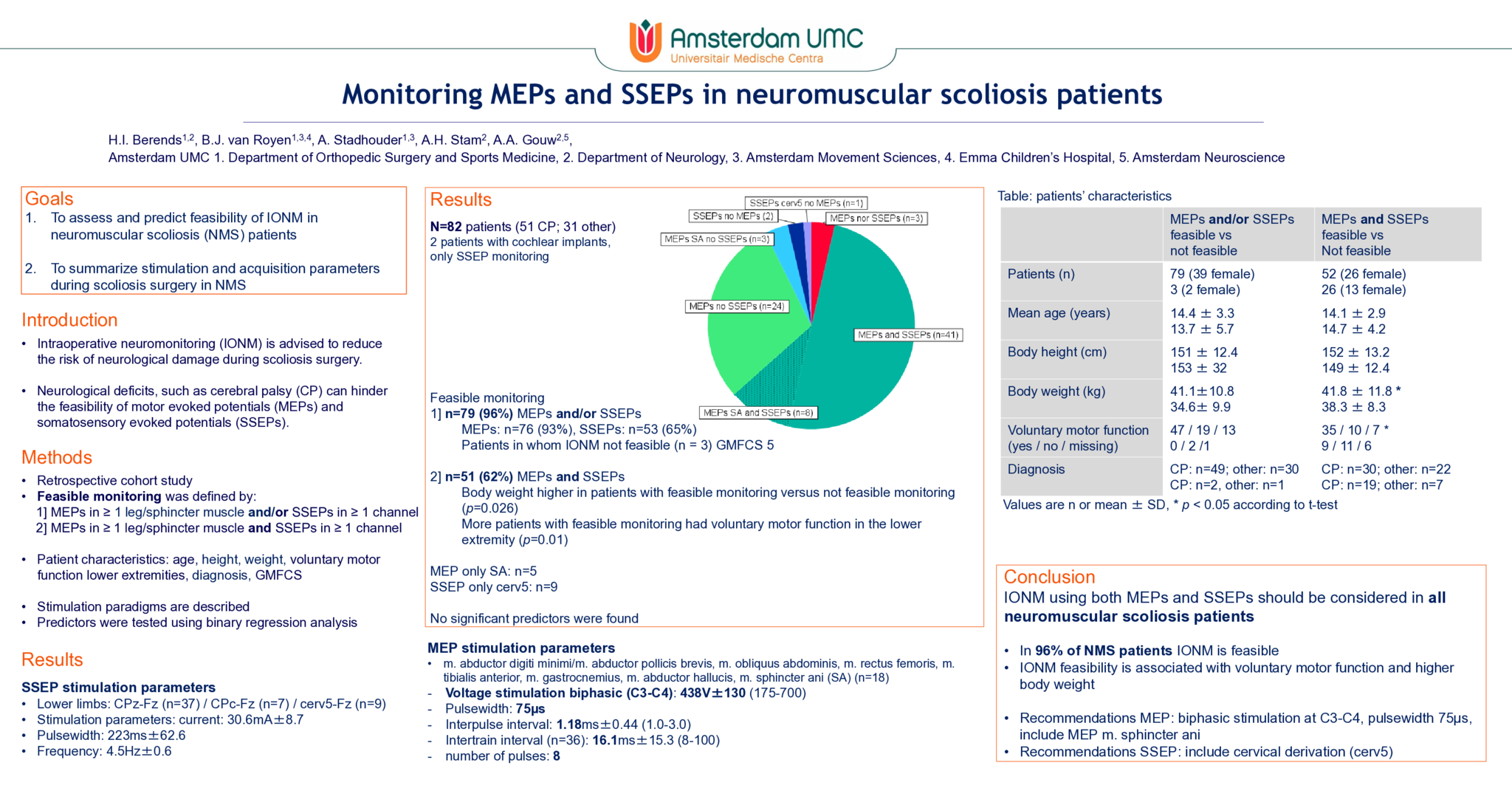Objective: Neurological deficits, such as cerebral palsy (CP) can hinder the feasibility of motor evoked potentials (MEPs) and somatosensory evoked potentials (SSEPs). This study investigated patient characteristics predicting feasibility of monitoring in neuromuscular scoliosis patients. Methods: We retrospectively included 82 neuromuscular scoliosis patients (age 14.3 years± 3.35). For MEP stimulation, we used voltage stimulation, 75µs pulsewidth, and double train stimulation whenever necessary (n=38). Tibial nerve SSEPs were recorded at both cervical and cortical sites. Feasible monitoring was defined by 2 different definitions: 1] MEPs in ≥ 1 leg/sphincter muscle and/or SSEPs in ≥ 1 channel; 2] MEPs in ≥ 1 leg/sphincter muscle and SSEPs in ≥ 1 channel. Age, weight, height, voluntary motor function of the lower extremity, diagnosis, and gross motor function classification system (GMFCS) were compared between patientgroups with and without feasible monitoring. Binary logistic regression analyses were performed to identify predictors. Results: MEPs were obtained in 95% of patients and SSEPs in 68%. Definition 1: 79 patients (96%) had feasible monitoring. Patients withou feasible monitoring all had GMFCS 5. Definition 2: in 51 patients (62%) MEPs and SSEPs were attained. All patients with spontaneous movement had feasible MEPs. No significant predictors were found. Conclusion: Intraoperative neuromonitoring is feasible in a high proportion of neuromuscular scoliosis patients. The stimulus parameters and multiple recording sites used may explain the relative high success rate compared to literature. The absence of predictors for reliable monitoring justifies that monitoring should be considered in all patients.
- 1 view




